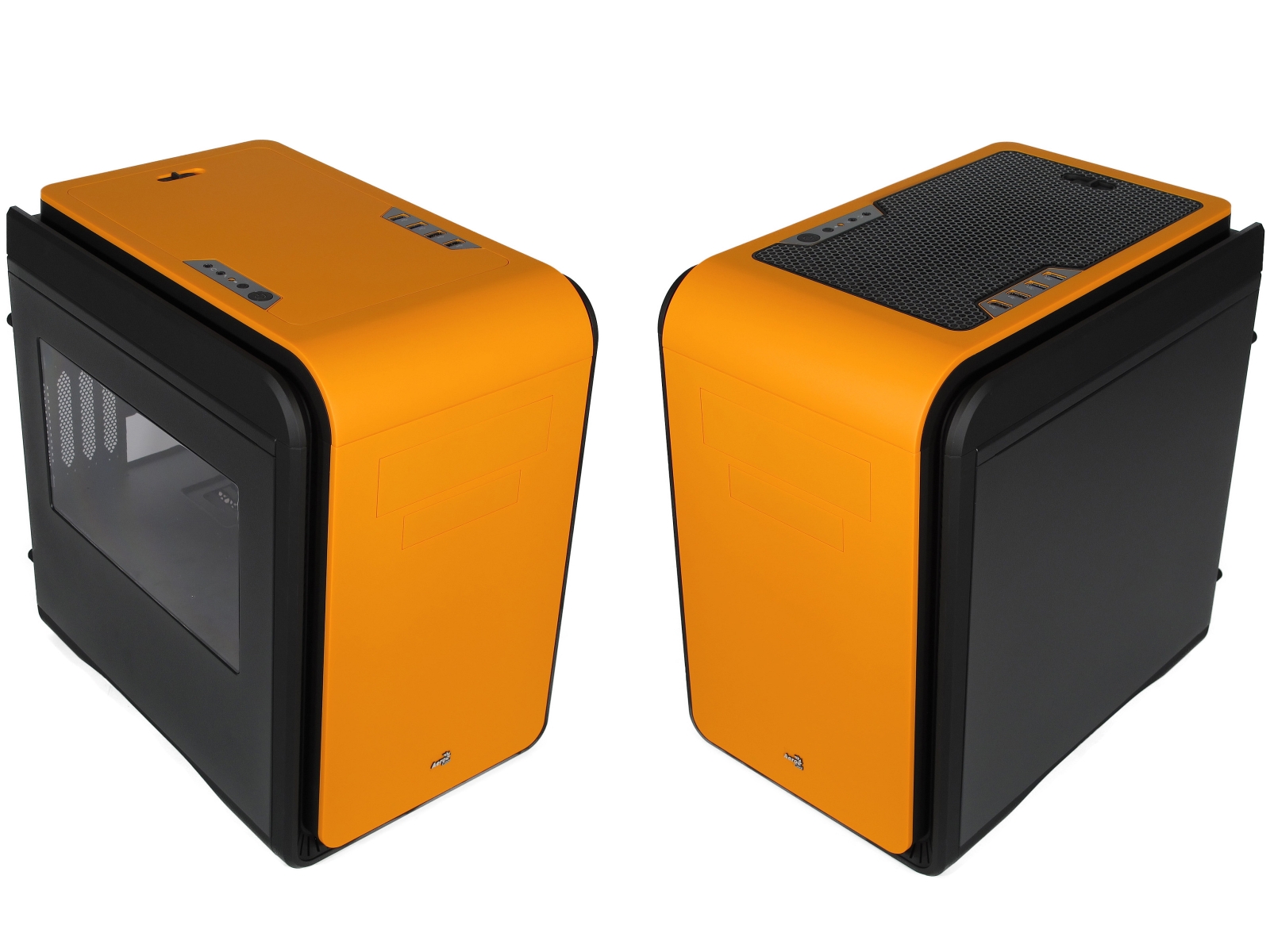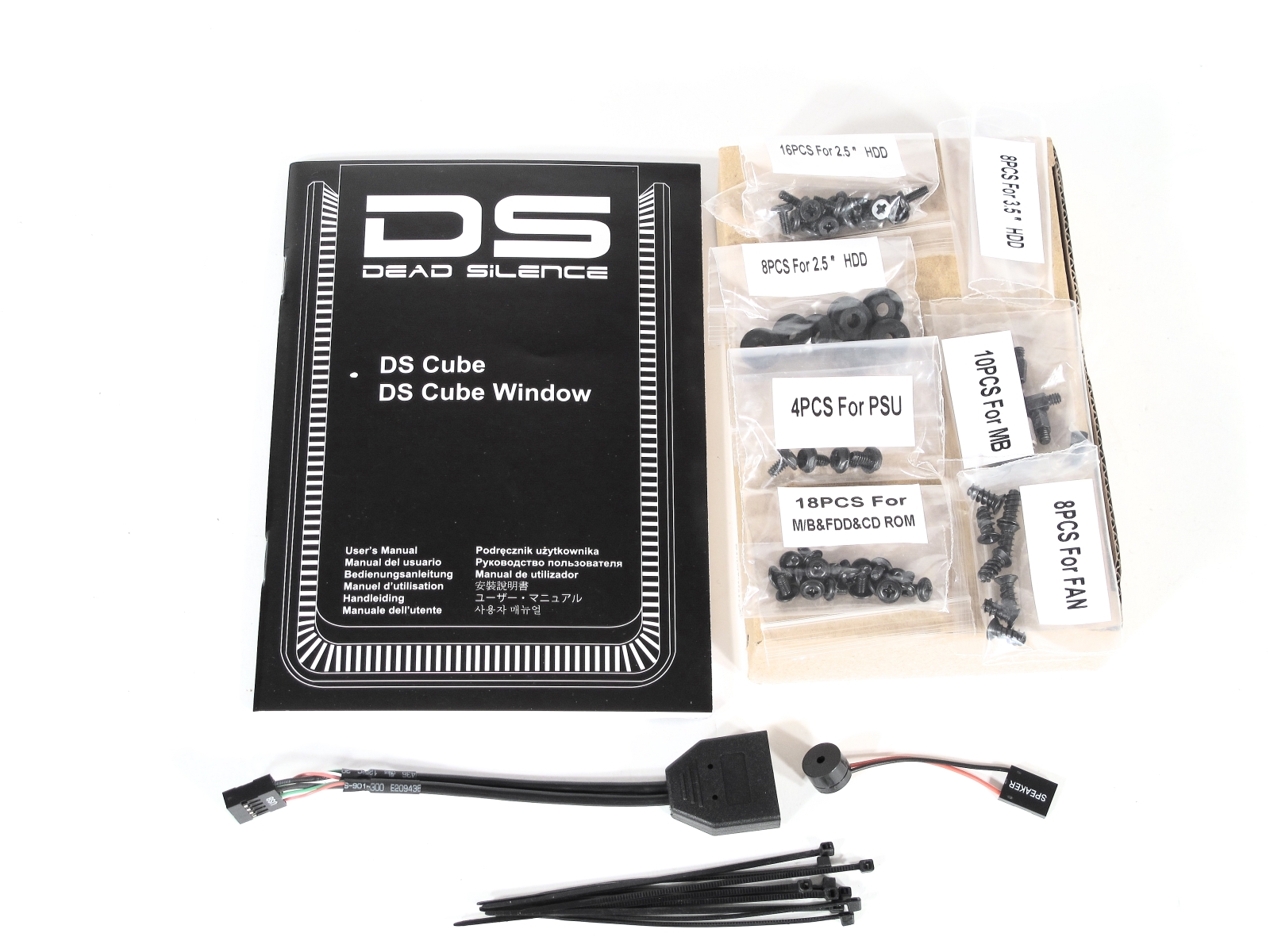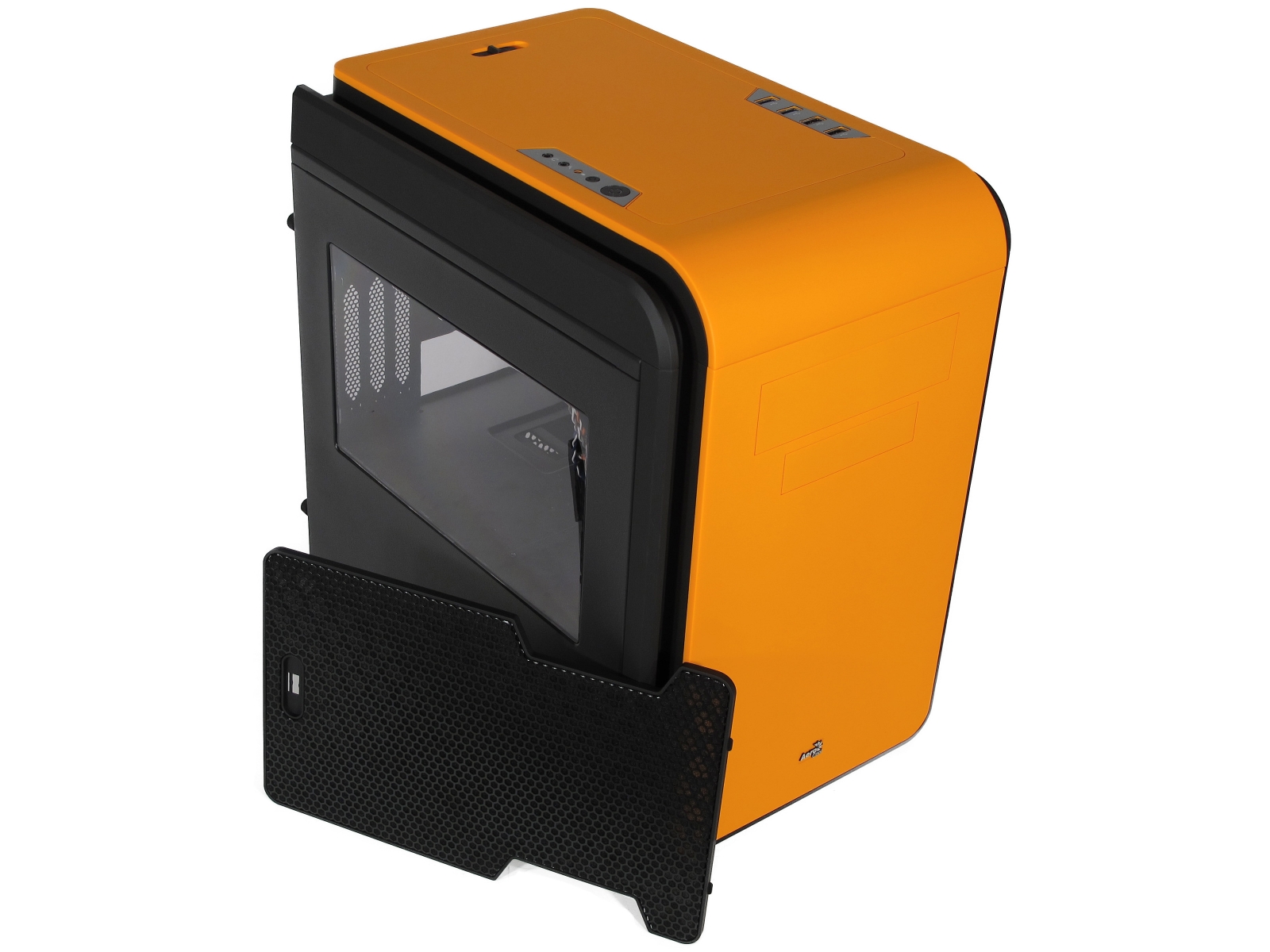Aerocool DS (Dead Silence) Case Review
Aerocool, a company best known for its flashy tower-style gaming cases, surprised us with a small and well-thought-out cube-shaped chassis with space for tall CPU coolers and long graphics cards, in spite of its size. It comes in six color combinations.
Aerocool's Dead Silence Case Gets Reviewed
The DS abbreviation in the name of Aerocool’s newest case stands for Dead Silence, and the enclosure's cooling solution is supposed to be consistent with that nomenclature. Its 200 mm front fan runs at a conservative 500 RPM, and its 120 mm rear fan spins at 900 RPM. And yet, Aerocool maintains that the DS' thermal capabilities are sufficient for gaming platforms based on microATX or mini-ITX form factors. In case the stock setup proves unable to cope with all of your high-end hardware, you also have the option to install additional fans, a 240 mm radiator, or a mesh cover for the case’s top. A two-chamber system that separates the hot components, such as the motherboard, processor, and graphics card, from the rest of the system provides unobstructed airflow.

Aerocool's DS is supposed to hit the market in a few days at a price point of $120 under $75, and you can already find it listed on the company's own site. From that, we know the case will be available in six different colors: black, black/red, black/orange, black/gold, black/white, and white. From there, you can opt for or against a side window, too.
Packaging and The Bundle
The Dead Silence chassis itself is not the only thing less gaudy than the company's usual fare. Its packaging is environmentally-friendly cardboard.

Aerocool's DS comes with everything from spacers to screws to nuts. There are enough small parts to fill every slot, bay, and fan space in the case, all sorted in their own plastic bags, which are clearly labeled. A piezo speaker, a bunch of ties, and a cable that adapts USB 3.0 to a motherboard's USB 2.0 header round out the enclosure's accessory bundle.

Finally, there’s an optional top cover that promises better cooling performance, so long as you're willing to break the case's nice clean sweeping aesthetic. We'll go into more detail on that shortly. Aerocool's illustrated installation manual is simple, but completely sufficient. It covers all of the chassis' most unique aspects.

Technical Specifications and Front Panel
| Manufacturer | Aerocool |
|---|---|
| Model Number | DS (Dead Silence) |
| Type | Cube |
| Dimensions(HxWxD) | 41.1 x 26.5 x 38.1 cm |
| Weight | 6.8 kg |
| Materials | Steel |
| Plastic with Soft-Touch Surface(Front Cover, Top Cover) | |
| Form Factor | microATX, mini-ITX |
| Drive Bays | 1 x 5.25" (external) |
| 1x 3.5" (external) | |
| 2 x 3.5" or 2.5" (internal) | |
| 2 x 2.5" (internal) | |
| Expansion Slots | 4 |
| Fans(Preinstalled) | 1 x 200 mm Front (500 RPM) |
| 1 x 120 mm Rear (900 RPM) | |
| Fans(Optional) | 2 x 120/140 mm Top |
| 1 x 120/140 mm Front (Instead of Preinstalled 200 mm Fan) | |
| 1 x 140 mm Rear (Instead of Preinstalled 120 mm Fan) | |
| Water Cooling (Optional) | 240 mm Radiator Top |
| 120/140 mm Radiator Rear | |
| CPU Cooler | Up to 19.0 cm |
| Graphics Card | Up to 25.0/32.0 cm (With or without Cage for External 3.5" Drive) |
| Power Supply Unit(PSU) | Up to 17.0 cm (Up to 19.0 cm Including Protruding Cables) |
| Cable Management | Case Design with Two Chambers, Cables Can Be Routed through Motherboard Tray Openings and Space between Motherboard Edges and Side Panels |
| Price | $120 |
The Dead Silence's front panel features everything that you would generally expect from a case like this. There’s a pair of USB 3.0 connectors (also usable as 2.0 with the included adapter) and a separate pair of USB 2.0 connectors, a power and a reset button, and two audio connectors that must be connected to the HD Audio headers on your motherboard. The front panel is split into two parts that are located on the left and right side of the case’s top. Each has its own highly polished plastic surface.


Get Tom's Hardware's best news and in-depth reviews, straight to your inbox.
Current page: Aerocool's Dead Silence Case Gets Reviewed
Next Page Exterior And Picture Gallery-
DarkSable Well damn. I really like this thing, but it's just too big for a mini-ITX rig, and there are a lot better options out there for micro-ATX.Reply -
slyu9213 I agree kind of big and not sure how silent it is. But when I think of gaming I don't think of silent. Especially with some of the fans on the video cards.Reply -
DarkSable But that's why you watercool. ;)Reply
(Which this case doesn't have amazing support for. There aren't any good 200mm radiators to put in the front.) -
chumly Can you guys take a thermal reading at the point between the motherboard and PSU when the system is at load please?Reply -
Crashman Reply
Did anyone see any mention of the Bitfenix Prodigy? I used the Mini ITX version of this case in the June System Builder Marathon.11743015 said:Well damn. I really like this thing, but it's just too big for a mini-ITX rig, and there are a lot better options out there for micro-ATX. -
DarkSable Reply11743356 said:Did anyone see any mention of the Bitfenix Prodigy? I used the Mini ITX version of this case in the June System Builder Marathon.
Hang on, I'm confused. Two points.
1) I've used a prodigy before, and consider it huge for mini-ITX. It has its uses, but it's specialized... but no, I didn't see it mentioned in the article. What does that have to do with it?
2) Wait, I'm confused. Is "this case" referring to the prodigy or to this dead silence case. Does the case reviewed in the article actually have two versions, a mini-itx and a matx? If so (and the matx isn't done as poorly as the matx prodiy), that would be awesome.
-
Crashman Reply
Now I'm confused? I just looked at the pictures and spotted a case structurally identical to my Mini ITX Prodigy, except for the added width. Does the different plastic really disguise it that well?11743462 said:11743356 said:Did anyone see any mention of the Bitfenix Prodigy? I used the Mini ITX version of this case in the June System Builder Marathon.
Hang on, I'm confused. Two points.
1) I've used a prodigy before, and consider it huge for mini-ITX. It has its uses, but it's specialized... but no, I didn't see it mentioned in the article. What does that have to do with it?
2) Wait, I'm confused. Is "this case" referring to the prodigy or to this dead silence case. Does the case reviewed in the article actually have two versions, a mini-itx and a matx? If so (and the matx isn't done as poorly as the matx prodiy), that would be awesome.
Or are you thinking of the completely-revised Prodigy M, rather than the original Prodigy? Please take another look at the original Prodigy. If this case is better than the Prodigy M and I'd tested both, I'd have probably called the DS "What the Prodigy M should have been"
-
Myrkvidr I would have compared the DS to the Prodigy, but unfortunately I never received one of the Bitfenix ITS-Cases for testing...Reply -
DarkSable Reply11743552 said:Now I'm confused? I just looked at the pictures and spotted a case structurally identical to my Mini ITX Prodigy, except for the added width. Does the different plastic really disguise it that well?
Or are you thinking of the completely-revised Prodigy M, rather than the original Prodigy? Please take another look at the original Prodigy. If this case is better than the Prodigy M and I'd tested both, I'd have probably called the DS "What the Prodigy M should have been"
Okay, gotcha, yes. It's another Prodigy spinoff, I agree. I still consider it large, though. :P